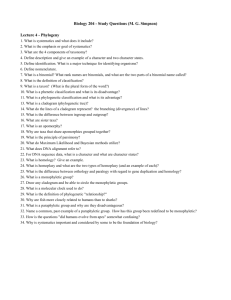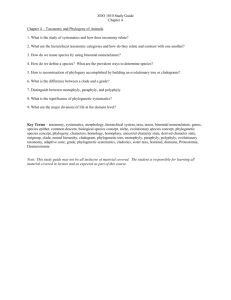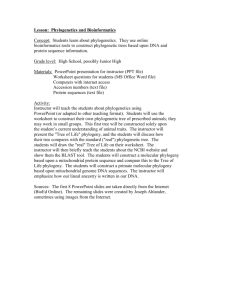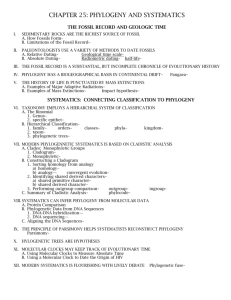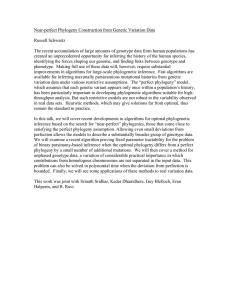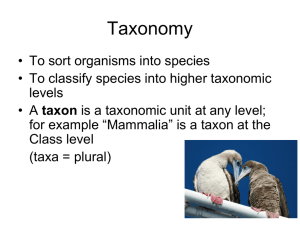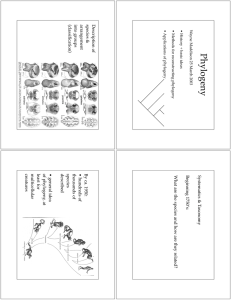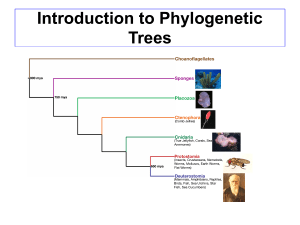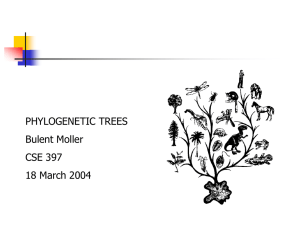TRG Phylogeny
advertisement
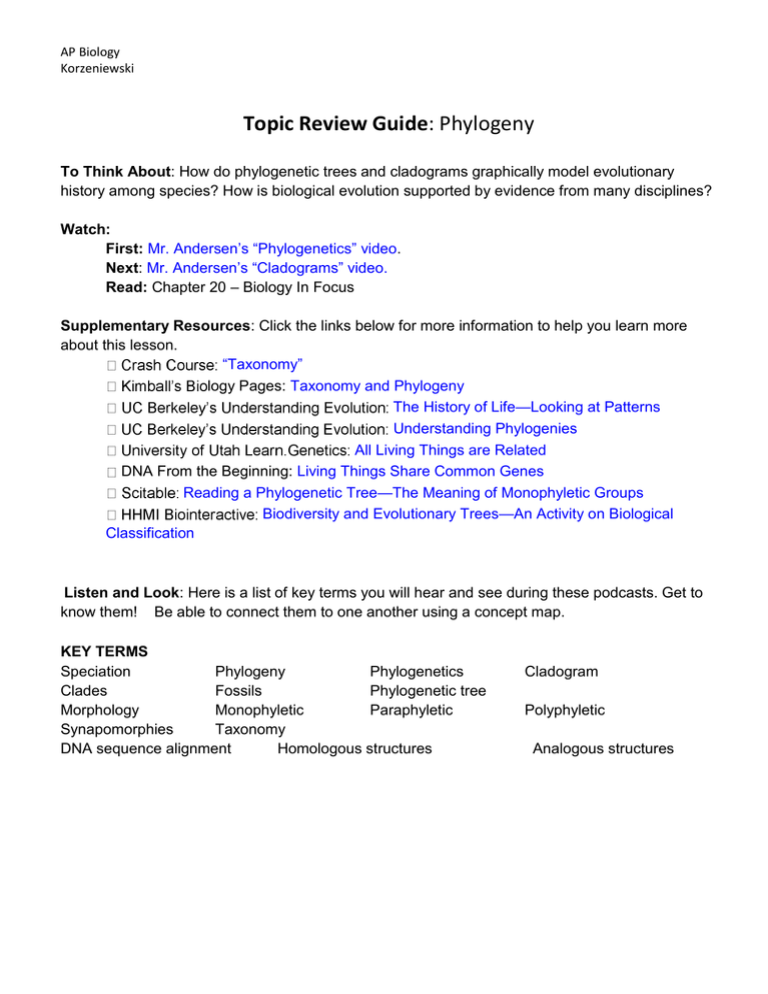
AP Biology Korzeniewski Topic Review Guide: Phylogeny To Think About: How do phylogenetic trees and cladograms graphically model evolutionary history among species? How is biological evolution supported by evidence from many disciplines? Watch: First: Mr. Andersen’s “Phylogenetics” video. Next: Mr. Andersen’s “Cladograms” video. Read: Chapter 20 – Biology In Focus Supplementary Resources: Click the links below for more information to help you learn more about this lesson. “Taxonomy” logy Pages: Taxonomy and Phylogeny The History of Life—Looking at Patterns Understanding Phylogenies All Living Things are Related DNA From the Beginning: Living Things Share Common Genes Reading a Phylogenetic Tree—The Meaning of Monophyletic Groups Biodiversity and Evolutionary Trees—An Activity on Biological Classification Listen and Look: Here is a list of key terms you will hear and see during these podcasts. Get to know them! Be able to connect them to one another using a concept map. KEY TERMS Speciation Phylogeny Phylogenetics Clades Fossils Phylogenetic tree Morphology Monophyletic Paraphyletic Synapomorphies Taxonomy DNA sequence alignment Homologous structures Cladogram Polyphyletic Analogous structures AP Biology Korzeniewski Name: ___________________________ Recall and Review: Use the lecture in the video and your textbook reading to help you answer these questions in your BILL. 1. Explain what Darwin meant when he talked about the common descent of all life, and what the significance is of the branch points on a phylogenetic tree. 2. Describe the following pieces of evidence that can be used to construct phylogenetic trees and provide two examples of each: a. Morphological b. Molecular c. Developmental d. Behavioral 3. Explain why the fossil record is incomplete and why fossils are not the only evidence that should be used in determining phylogeny of a species. 4. In the video, Mr. Andersen describes what a clade is and what it looks like on a cladogram. Explain why the green section of the cladogram is not a true clade. 5. Explain why synapomorphies are critically important in the construction of a cladogram. 6. Describe the relationship between convergent evolution and analogy. Explain how this is different from homology. Describe how biological analogies develop. Give an example of analogous structures. Provide examples of homologous structures. 7. Describe the relationships between the following pairs of words: a. Monophyletic and polyphyletic b. Paraphyletic and polyphyletic c. Ingroup and outgroup 8. Explain how scientists are using phylogenetics to study HIV. 9. Compare and contrast phylogeny with genealogy. How are these two disciplines similar? How are they different? 10. Describe the relationship between taxonomy and phylogeny. Learn More: For more examples of phylogeny and taxonomy, use the links below:

